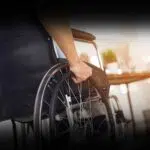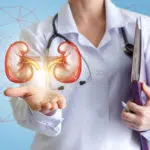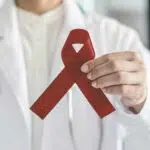Deep-Vein Thrombosis Awareness Month is observed in March every year in the United States. This public health initiative aims to raise awareness about this commonly occurring medical condition. Pulmonary embolism is a potentially fatal complication of deep-vein thrombosis. The American Heart Association states that up to two million Americans are affected by D.V.T. every month, or what more people understand as blood clots. The American Public Health Association helps to raise awareness about D.V.T. because 74% of Americans have little or no awareness about it. Health professionals help by learning more about D.V.T. and the options available for prevention and treatment.
History of Deep Vein Thrombosis (DVT) Awareness Month
Deep-Vein Thrombosis Awareness Month is observed in March to raise awareness of D.V.T. D.V.T. refers to a blood clot or thrombus that forms in one or more veins deep inside a person’s body. D.V.T. usually develops in the leg, but it can occur elsewhere. It blocks normal blood circulation in the body. Blood clots in the deep veins can break off and travel through the bloodstream. They can become lodged in one of the blood vessels in the lungs. This is called a pulmonary embolism. It requires emergency treatment as it can have fatal consequences. Some D.V.T. symptoms can include swelling, pain, discoloration, and abnormally hot skin in the affected area. Almost half of D.V.T. cases have minimal symptoms. Some conditions such as muscle strain, skin inflection, and vein inflammation have similar symptoms. This makes D.V.T. more difficult to diagnose.
D.V.T. is most accurately diagnosed through venous ultrasound and venography. Impedance plethysmography is also detected via electrodes and a blood pressure cuff placed on the patient’s calf and thigh. D.V.T. below the knee usually doesn’t lead to severe complications. Blood clots above the knee can break off and travel up the bloodstream. Other consequences of D.V.T. include damaged blood vessels, which lead to blood pooling, swelling and pain in the leg, and death in the most severe cases. People with prior D.V.T., stroke, pregnancy, obesity, undergoing major surgery, over the age of 65, and those confined to long periods of immobility such as travel or bed rest are more at risk for deep-vein thrombosis than others.
Deep Vein Thrombosis (DVT) Awareness Month timeline
Raoul develops a unilateral edema in the ankle that extended to his leg.
Wiseman suggests that D.V.T. is the consequence of a blood alteration.
Breast-feeding is encouraged to prevent DVT in pregnant and postpartum women.
Virchow demonstrates the relationship between D.V.T. and pulmonary embolisms.
Deep Vein Thrombosis (DVT) Awareness Month FAQs
How is D.V.T. diagnosed?
A medical professional undertakes sufficient investigations to ascertain a definitive diagnosis.
How are clots detected?
We can detect clots in the veins by using ultrasound to show whether blood is flowing normally or if there is a blockage.
How can we prevent D.V.T.?
People considered high risk may be prescribed small doses of anticoagulants to reduce their risk.
How to Observe Deep Vein Thrombosis (DVT) Awareness Month
Share the holiday
You can share the holiday with the people around you. This can be online or offline.
Do some research
Learn more about D.V.T. and what the patients go through. You’ll have a better understanding of the disease.
Make a donation
You can donate to an organization that handles D.V.T. research. This will help save lives.
5 Important Facts About D.V.T.
D.V.T. may not have symptoms
Cases of D.V.T. can occur without any noticeable symptoms.
Smoking increases the risk
Smoking regularly increases the risk of D.V.T.
It causes skin abnormalities
D.V.T. can lead to red or discolored skin, abnormally hot skin, and swollen veins that are hard or sore when touched.
Pills can cause risks
D.V.T. risk increases when a person takes birth control pills or hormone replacement therapy.
Cancer treatment can increase risk
People who are undergoing cancer treatment have a risk of experiencing D.V.T.
Why Deep Vein Thrombosis (DVT) Awareness Month is Important
It raises awareness
The holiday helps to raise awareness about D.V.T. It helps spread helpful information.
It saves lives
The holiday helps raise funds. This helps to ensure people receive treatment for the disease.
It promotes research
The holiday helps promote research. This, in turn, improves the treatments patients can access.
Deep Vein Thrombosis (DVT) Awareness Month dates
| Year | Date | Day |
|---|---|---|
| 2026 | March 1 | Sunday |
| 2027 | March 1 | Monday |
| 2028 | March 1 | Wednesday |
| 2029 | March 1 | Thursday |
| 2030 | March 1 | Friday |

















































































































































